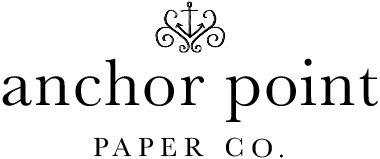Don't be intimidated by invitation wording etiquette — the rules are actually much simpler and straightforward than you think. And in most cases, there's more than one way to do it, so feel free to riff off these wording rules to create your own. To help guide you, we're breaking down what each line means and what it typically includes.
Section 1: Host Line
Optional. The first lines of the invitation are traditionally reserved for whoever is hosting (ie, paying) for the event. This can be the bride's parents, groom's parents, all parents, or something more communal like "together with out families", if everybody is contributing. Read more about divorced parents, deceased parents, blended families, etc in our Invitation Wording Guide. If you're finding that the host line is tricky or sensitive you can leave the host line out all together.
Section 2: The Request Line
This is where you actually invite your guests to your event. There are a lot of ways to word this, but a very traditional line is "request the pleasure of your company at the marriage of...".
Section 3: Bride and Groom Lines
The name of the bride always precedes the groom's name. If the host line includes the parents of the couple, you would not repeat last names for the bride and groom, but would instead have just the first and middle names. If the parents of the bride are in the host line, but the groom's parents are not included, you would have the first and middle name of the bride, followed by the groom's full name (first, middle, last). If the couple is hosting by themselves, their titles are optional.
Section 4: Date and Time Lines
For formal weddings, everything is written out in full (no numerals). For casual weddings, numerals are fine.
Writing the time
- Always spell out the numbers; such as "four" instead of "4".
- It's always "half after four" and never "four thirty".
- Include "o'clock" when writing the time. For example, it would be "half after four o'clock", or "four o'clock". Note, I think it's OK sometimes to drop the "o'clock" for half hours.
- It's always "half after" and never "half past".
- It's "morning" up until 12noon, "afternoon" from 12noon-5pm, and "evening" any time from five and afterwards. Some people say that 6pm is when "evening" starts, but I personally tend to go with 5. You could really do either, though. The proper way to write it would be "eleven o'clock in the morning", "half after four o'clock in the afternoon", and "seven o'clock in the evening".
- Since you write out the numbers, and include "morning, afternoon, or evening", you never include "am" or "pm".
- Time is never capitalized.
Writing the date
- Always write out the day of the week, number of the month, and full month. For example "Saturday, the tenth of May".
- Compound numbers, such as May 28th, have a hyphen and are written as "Saturday, the TWENTY-EIGHTH of May"
- While it's a little less traditional, you can write "Saturday, May twenty-eighth".
- The number of the month does not get capitalizes, but the day of the week and the month itself does.
Writing the year
- Always write out the number of the year, such as "two thousand sixteen."
- There is no "and" in the year. Never write it as "two thousand and sixteen".
- Nothing in the year needs to be capitalized.
Section 5: Ceremony Location Lines
The street address is not usually needed, unless omitting it would lead to confusion or your wedding is taking place at the host's home. The city and state are written out in full.
Section 6: Reception Lines
Optional if ceremony and reception are at same location, although most people do include a line that says "reception to follow" or "formal reception following ceremony". When the reception is elsewhere, the location goes on a different line. Include the time if not immediately following the ceremony. Very formal invitations include this information on a separate card.
Section 7: Attire
Optional. You can add a line letting guests know what the appropriate attire is. Common verbiage include "formal attire requested", "black tie", "black tie optional", or "casual attired" for a more casual event.
Please note: This post is based off of various blog posts originally written by Sincerely, Jackie. Her Stationery 101 series is a wonderful resource for future brides as well as fellow stationers. I highly recommend checking her out!

